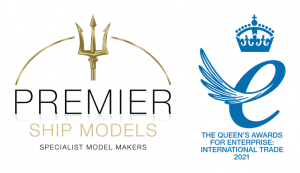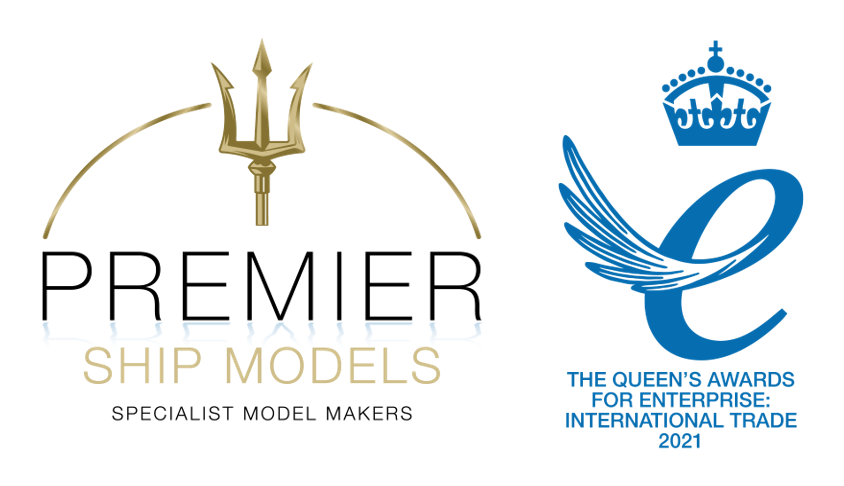Back in May of this year, Premier Ship Models started working on a model of a (FNPP) floating nuclear power plant model, specifically, the SPAR. The model was to measure in at a scale of 1 to 100, and a timeline of 12 weeks was set. Our workshop in Mauritius was tasked with completing this project, and the sale itself was closed by our director, Nathan.
It was agreed that the model would be mounted on a base, and would also come accompanied with a personalised name plate, as well as an acrylic cover for maximum protection, both during transportation and subsequent display.
Core Power, the client, wished to present the model in an exhibition in Vienna, Austria.
Core Power is a private maritime and technology company based in the UK, and they are leading specialists in many fields, including nuclear energy, electrical energy and desalination.
The company was formed in 2018, and their primary focus was to bridge the gap between the potential of nuclear energy, and the need for an efficient, zero-emissions means of generating said energy.
They partner with some of the world’s most advanced power, engineering and innovation companies, hoping to deliver sustainable “zero-emission energy for floating industrial production, as well as deep-sea shipping.”
Being in a sector as competitive as the maritime industry is no small feat, and the way Core Power have established themselves in such a short period of time is admirable. Their goal for the near future is a “competitive true-zero emission power system for the future of maritime by 2030.”
The work they conduct is extremely vital for the well-being of the environment, in both the long-term and the short-term, and we’re so proud that we had the opportunity to build a model of theirs.
From the offset, it was clear that this was an opportunity we couldn’t turn our backs on. It was always going to be a unique challenge, like any new project, but certainly a welcome one. As with all of our corporate projects, extensive research was initially made to ensure the accuracy of the model was both achievable and realistic.
The SPAR model was to include a base, name plate and acrylic cover as mentioned in the overview, but it would also be fitted with working lights so as to add another layer of realism. It was also decided that the model would be in full colour, with light blue, navy blue, orange and white being the most prominent colours, and the model itself would be statical, meaning there are no moving parts whatsoever.
Talking frequently with the client throughout the building process ensured that the model was made completely to fit their exact requirements. This relates to specifications such as colour schemes, structures and general measurements. It also guaranteed absolute transparency, in the sense that the client could visibly see the progress of their order.
The 3D printing process involves two key phases: presentation and production. Presentation includes research, client collaboration, and render creation. Production comprises the actual 3D printing and assembly.
Initially, we liaise with the client, gather blueprints, and discuss details like colour schemes and decals. Our 3D modeler then creates a digital model with client input and refines it.
Upon client approval, production begins. We convert the digital render into a 3D printer-compatible file, split it into parts, and prepare them for printing. Each part receives support structures for stability.
Printing takes about 24 hours, with the pieces emerging on a platform in acrylic resin. After careful cleaning and immersion in IPA (99% alcohol), the pieces dry for up to two days, ensuring strength. UV curing adds hardness, and the lattice structure is removed.
Assembly begins with merging printed parts, while the main bodily construction involves gluing joints for rigidity. Smaller pieces are cleaned and painted individually, and the smaller pieces can be attached to the body, in this case, the helipad can be used as an example of a separate piece.
The finishing touch involves installing a display case, connecting it to the ship with stainless-steel rods and a metal socket for seamless integration. A pre-cut, adhesive plate is added for a quick finish.
The model is then ready for client installation.
Core Power were thrilled with the end result of the SPAR FFNP model, and the exhibition they attended in Vienna was a success all around. The model was a huge talking point thanks to its immense level of detail and accuracy.
Premier Ship Models are so grateful that we had this opportunity, and we’re excited to now move on to new projects and expand our horizons!
Commission your own model
If you would like to have your own bespoke model built, please complete the contact form below.


